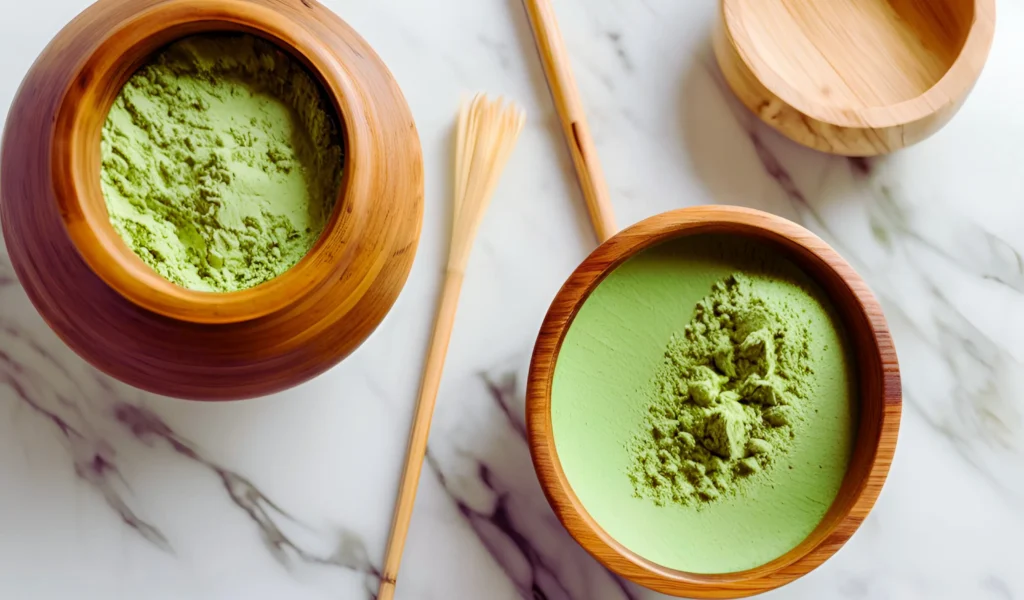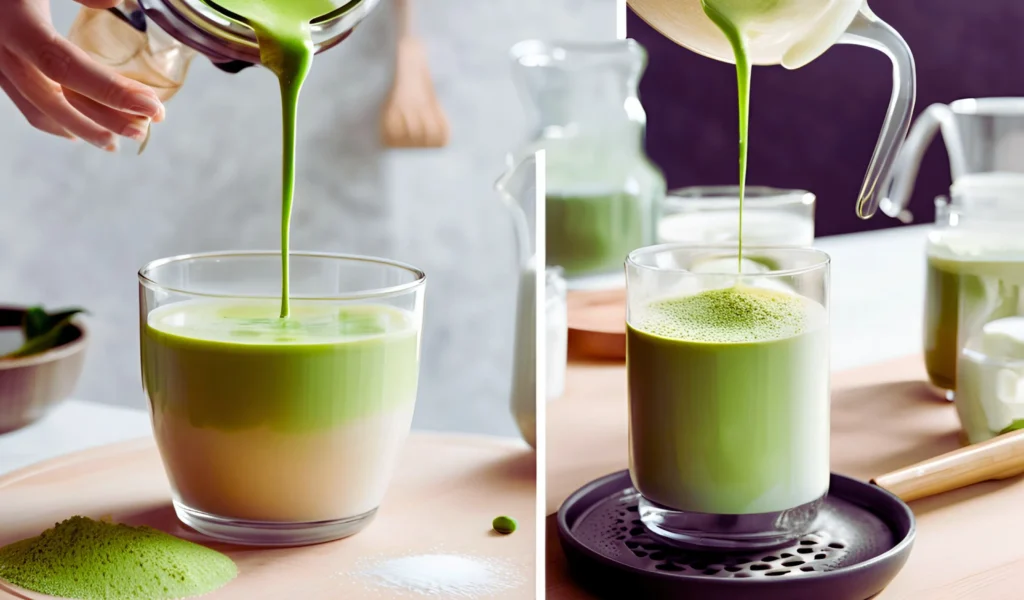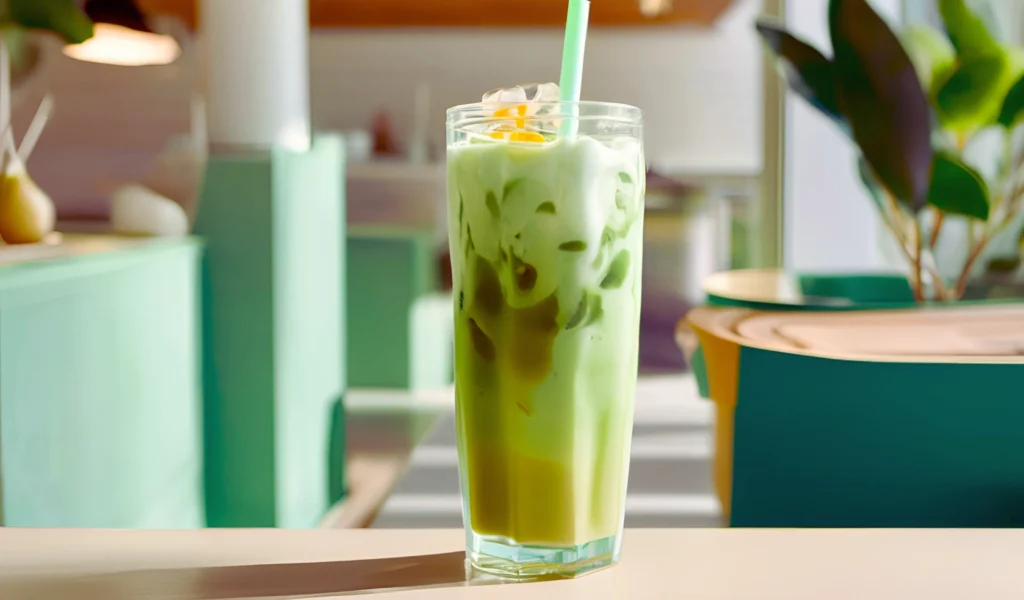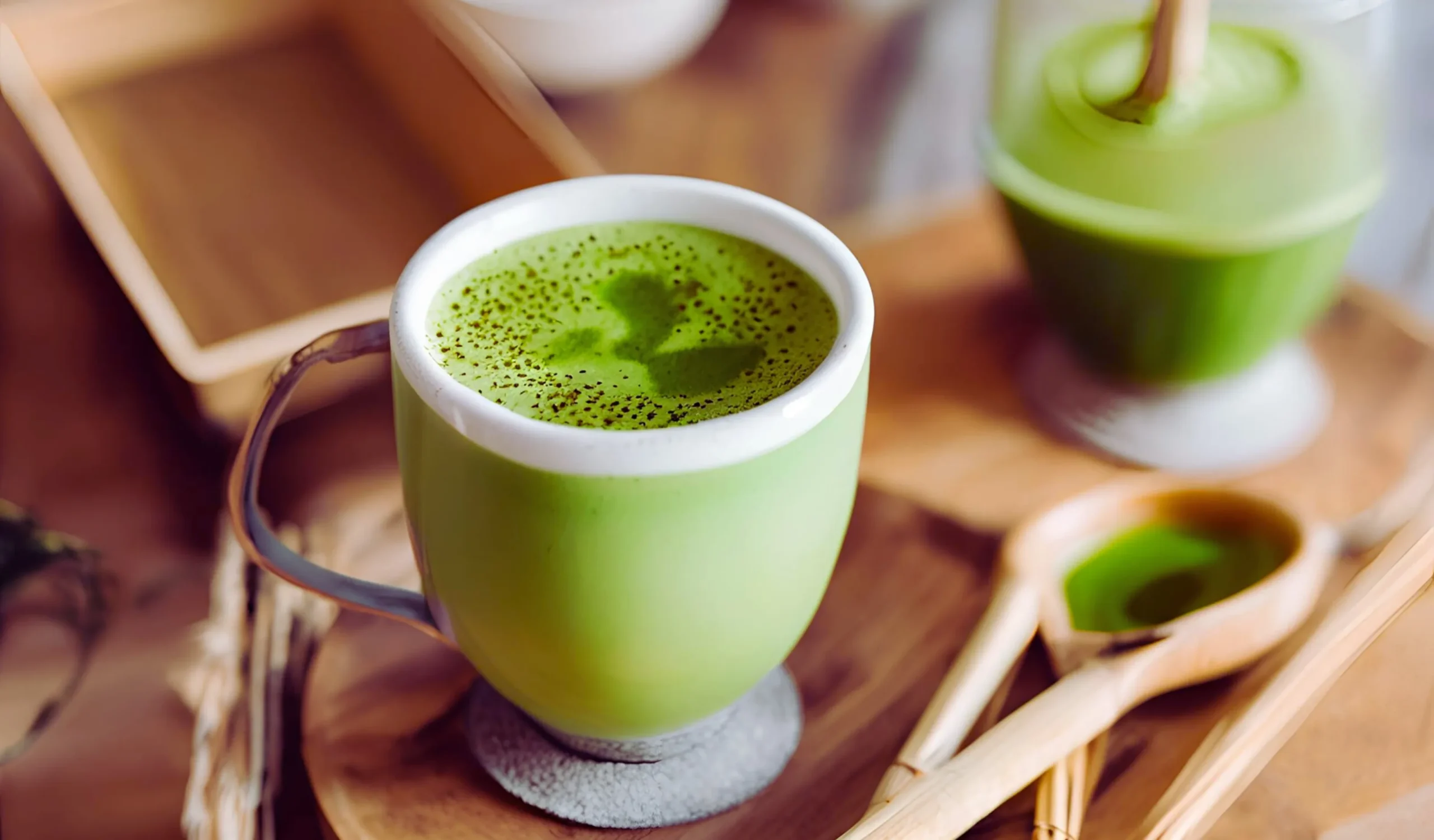Starbucks Matcha Latte Recipe: A Step-by-Step Guide to Perfection
Learning how to make the Starbucks Matcha Latte recipe at home is now easier than ever! In this article, we’ll cover every detail—from matcha’s rich history to the steps for crafting your own latte masterpiece. Additionally, you’ll find cultural insights, nutritional information, and pro tips for customizing the drink to your taste. Whether you prefer it hot or iced, you’ll soon be able to enjoy a creamy, delicious matcha latte right in the comfort of your own kitchen.
Part 1: Introduction to Starbucks Matcha Latte
Understanding the Popularity of Starbucks Matcha Latte
The Starbucks Matcha Latte is more than just a beverage—it’s a cultural phenomenon. With its earthy flavor, creamy texture, and eye-catching green hue, it has gained widespread popularity among tea lovers and health enthusiasts alike. Furthermore, Starbucks has successfully turned matcha, a centuries-old Japanese tea, into a trendy and globally recognized drink.
Why has it gained such traction? Well, for one, its health benefits are widely praised. Packed with antioxidants and a moderate caffeine boost, this latte offers a guilt-free energy lift without the jitters commonly associated with coffee. Moreover, its unique flavor profile balances the natural bitterness of matcha with the creaminess of milk and a touch of sweetness.
What Is Matcha?
Matcha isn’t your typical green tea. It’s a finely ground powder made from shade-grown tea leaves, meticulously cultivated in Japan. Unlike regular tea, where leaves are steeped and discarded, matcha involves consuming the entire leaf—resulting in a concentrated dose of nutrients.
However, not all matcha is created equal. For instance, Starbucks uses a sweetened matcha blend, giving their latte its distinctive flavor. To replicate that authentic experience, it’s crucial to choose high-quality matcha, typically labeled ceremonial or culinary grade. Additionally, select a vibrant green powder with a smooth texture and a slightly sweet, umami flavor for the best results.
The Rise of Matcha in Western Cafés
Matcha’s journey from traditional Japanese tea ceremonies to modern coffee shops is fascinating. While it was once a niche ingredient, primarily enjoyed in Asia, its popularity exploded when major brands like Starbucks introduced matcha-based drinks. Suddenly, this ancient superfood became a contemporary sensation, gracing Instagram feeds and café menus worldwide.
Starbucks played a pivotal role in this rise, presenting matcha as an accessible, indulgent treat rather than a niche health drink. From its iced version to seasonal variations, Starbucks has continually innovated, keeping the matcha latte exciting and relevant for customers.
Part 2: Starbucks Matcha Latte Recipe
2.1 Ingredients Needed

Recreating an authentic Starbucks Matcha Latte at home requires only a few simple ingredients. Each component plays a key role in achieving the signature creamy, smooth texture and rich flavor. Here’s everything you’ll need:
- Matcha Green Tea Powder: 1–2 teaspoons of high-quality matcha (ceremonial or sweetened matcha blends for a closer Starbucks taste).
- Milk of Choice: 1 cup (dairy milk or plant-based options like almond, oat, or soy milk).
- Sweetener (Optional): 1–2 tablespoons of sugar, honey, agave syrup, or a zero-calorie sweetener.
- Hot Water: 2 tablespoons to dissolve the matcha powder.
- Ice Cubes: For an iced matcha latte.
These ingredients will help you craft a latte that’s creamy, vibrant, and delicious every single time.
2.2 Equipment and Tools
Preparing a homemade Starbucks Matcha Latte requires a few basic kitchen tools. Don’t worry; they’re simple and easy to find:
- Whisk: A traditional bamboo whisk (chasen) is ideal, but a handheld frother or even a small regular whisk works.
- Bowl or Small Mixing Cup: To blend the matcha with water without clumping.
- Measuring Spoons: For precise ingredient measurements.
- Milk Frother: To create the signature foam; alternatives include a blender or a whisk.
- Tall Glass or Mug: For serving your latte.
- Strainer (Optional): To sift the matcha powder, ensuring no lumps in the final drink.
These tools make the preparation process smooth and ensure professional results.
2.3 Step-by-Step Preparation Instructions

Crafting the perfect Starbucks Matcha Latte at home is a fun and straightforward process. Follow these steps closely for the best results:
1. Sift the Matcha
To prevent clumps and ensure a smoother drink, use a fine mesh strainer to sift the matcha powder into a small bowl before preparing your latte.
2. Dissolve the Matcha
Add 2 tablespoons of hot water to the bowl with the matcha powder. Whisk vigorously in a zigzag motion (not circular) until the mixture is frothy and fully blended.
3. Heat or Froth the Milk
- For a hot latte: Warm the milk in a small saucepan or microwave until it’s hot but not boiling. Use a milk frother or whisk to create a creamy foam.
- For an iced latte: Skip heating the milk and move to the next step.
4. Sweeten to Taste
Stir in your chosen sweetener while the milk is warm for easier dissolving. Adjust based on your preferred sweetness level.
5. Combine and Serve
- For a hot latte: Once your matcha is whisked, pour the frothed milk into your mug. Stir gently to combine and enjoy your warm, creamy drink.
- For an iced latte: Begin by filling a tall glass with ice cubes. Then, pour the whisked matcha over the ice and add the cold milk, creating a refreshing and perfectly chilled beverage.
6. Optional Garnish
Sprinkle a pinch of matcha powder on top for added visual appeal.
Voilà! Your homemade Starbucks Matcha Latte is ready to enjoy.
2.4 Tips for Achieving the Perfect Consistency
- Always Sift Your Matcha: This small step eliminates clumps and ensures a smooth drink.
- Use the Right Milk: Full-fat dairy milk or creamy plant-based options like oat milk work best for replicating Starbucks’ texture.
- Blend Thoroughly: If you don’t have a bamboo whisk, use a handheld milk frother for an equally frothy and velvety result.
- Temperature Matters: Don’t use boiling water for matcha; it can scorch the powder and make it bitter. Aim for water at about 80°C (175°F).
Following these tips ensures your latte tastes as good as (or better than) the original.
2.5 Common Mistakes to Avoid
- Skipping the Sifting Step: Lumpy matcha can ruin the drink’s texture and make it harder to blend.
- Using Too Much Matcha: More isn’t always better; excess matcha can make your latte overly bitter.
- Not Frothing the Milk: Frothing adds creaminess and creates the signature café-style latte look.
- Overheating the Milk: Boiling milk can cause it to lose its sweetness and become scalded.
By avoiding these pitfalls, you’ll master the art of the Starbucks Matcha Latte recipe effortlessly.
Part 3: Nutritional Information
3.1 Nutritional Content (Per 100g)

Below is a breakdown of the nutritional content for a standard matcha latte made with dairy milk:
| Nutrient | Amount per 100g |
|---|---|
| Calories | 60 kcal |
| Carbohydrates | 9 g |
| Sugars | 8 g |
| Protein | 2 g |
| Fat | 2 g |
| Saturated Fat | 1 g |
| Sodium | 40 mg |
| Calcium | 100 mg |
| Caffeine | 25 mg |
This table provides a snapshot of the nutritional profile, highlighting the balance of energy, protein, and calcium.
3.2 Health Benefits of Matcha
Matcha is more than just a trendy ingredient—it’s a nutritional powerhouse! Some of the key health benefits include:
- Rich in Antioxidants: Matcha is loaded with catechins, particularly EGCG, which fight free radicals and reduce oxidative stress.
- Boosts Metabolism: Studies suggest that matcha can aid in weight management by enhancing fat oxidation during exercise.
- Improves Focus and Calmness: Thanks to the amino acid L-theanine, matcha provides a calm alertness without the jitters of coffee.
- Supports Heart Health: Regular consumption of matcha is linked to lower cholesterol and blood pressure levels.
These benefits make matcha a fantastic addition to your daily routine.
3.3 Considerations for Dietary Restrictions
For those with dietary restrictions, the Starbucks Matcha Latte recipe is highly adaptable:
- Dairy-Free or Vegan: Substitute dairy milk with almond, oat, soy, or coconut milk.
- Low-Sugar: Use unsweetened matcha and opt for natural sweeteners like stevia or monk fruit.
- Low-Calorie: Choose low-fat milk or a plant-based milk alternative to reduce calorie intake.
By customizing the ingredients, you can make this latte fit virtually any diet or lifestyle.
Part 4: Customizing Your Matcha Latte
4.1 Flavor Variations
Adding a personal touch to your Starbucks Matcha Latte recipe is as easy as experimenting with flavors. Here are some delightful variations to elevate your drink:
- Vanilla Matcha Latte: To enhance the flavor with a creamy, dessert-like twist, simply add a teaspoon of vanilla extract or a splash of vanilla syrup. This small addition makes a noticeable difference in both taste and aroma.
- Mint Matcha Latte: If you’re looking for a refreshing variation, try stirring in a drop of mint extract or muddling fresh mint leaves directly into your cup. As a result, your latte will have a crisp and invigorating taste.
- Spiced Matcha Latte: To create a warm and aromatic drink, sprinkle a pinch of cinnamon, nutmeg, or cardamom over the top. Alternatively, you can mix the spices directly into the matcha for a deeper, well-balanced flavor.
- Chocolate Matcha Latte: For a delightful matcha mocha hybrid, combine a teaspoon of cocoa powder or chocolate syrup with the matcha mixture. This combination not only adds richness but also enhances the overall smoothness of the drink.
- Citrus Matcha Latte: If you prefer a zesty and vibrant note, consider adding a splash of orange or lemon juice. Not only does it brighten the flavor, but it also adds a refreshing contrast to the earthiness of matcha.
These variations allow you to transform a simple latte into a unique creation that suits your mood and cravings.
4.2 Sweetener Alternatives
If you prefer a customized level of sweetness, consider these natural and artificial sweeteners:
- Natural Options: Honey, maple syrup, agave nectar, or coconut sugar add depth and complexity to the flavor.
- Artificial Sweeteners: Stevia, monk fruit extract, or erythritol are great for a sugar-free option without compromising sweetness.
- Flavored Syrups: Caramel, hazelnut, or vanilla syrups can enhance both sweetness and flavor simultaneously.
Each sweetener brings its own distinct taste, so feel free to experiment until you find your perfect match.
4.3 Dairy-Free and Vegan Options
The Starbucks Matcha Latte recipe is incredibly versatile, making it easy to adapt for dairy-free or vegan diets. Swap out traditional milk for these plant-based alternatives:
- Almond Milk: Offers a nutty undertone and light texture.
- Oat Milk: Provides creaminess similar to whole milk, making it a popular choice for lattes.
- Soy Milk: A rich and neutral option, perfect for a balanced latte.
- Coconut Milk: Adds a subtle tropical twist with its natural sweetness.
Opt for unsweetened versions to control sugar levels, and make sure the milk is well-shaken before use for a smooth consistency.
4.4 Iced Matcha Latte Preparation

Creating an iced version of the Starbucks Matcha Latte is perfect for warmer days or when you crave a chilled treat. Here’s how to do it:
- Prepare the Matcha Base
- To begin, whisk the matcha powder with hot water just as you would for a hot latte. Make sure the mixture is smooth and free of clumps for the best consistency.
- Cool the Base
- Once the matcha is well blended, let the mixture cool to room temperature. If you’re in a hurry, you can speed up the process by placing it in the refrigerator for a few minutes.
- Add Ice
- Next, fill a tall glass with ice cubes. For an extra elegant touch, consider using clear or decorative ice cubes, which enhance both presentation and texture.
- Combine and Stir
- After the matcha base has cooled, pour it over the ice, followed by your milk of choice. Then, stir gently to ensure all the ingredients are evenly combined.
- Optional ToppingsFinally, for an extra indulgent touch, add a dollop of whipped cream or a sprinkle of matcha powder. This not only enhances the flavor but also gives your latte a visually appealing finish.
This chilled delight is refreshing, energizing, and oh-so-easy to make!
Part 5: Frequently Asked Questions (FAQs)
5.1 What type of matcha does Starbucks use?
Starbucks uses a sweetened matcha powder blend, which contains matcha green tea and sugar. While it’s not ceremonial-grade, the blend is designed to mix easily with milk and deliver a balanced, slightly sweet taste that appeals to a wide audience.
5.2 Can I make a matcha latte without a whisk?
Absolutely! While a bamboo whisk is traditional, you can use a handheld milk frother, blender, or even a tightly sealed jar for shaking the matcha with water. Just ensure the matcha is fully dissolved and frothy for the best results.
5.3 How can I reduce the calorie content of my matcha latte?
To make a lower-calorie latte, consider these adjustments:
- Use unsweetened almond or oat milk.
- Opt for a sugar-free sweetener like stevia or monk fruit.
- Reduce the amount of sweetener or skip it altogether if you enjoy a less sweet drink.
5.4 Is matcha safe during pregnancy?
Matcha is generally safe during pregnancy when consumed in moderation, as it contains less caffeine than coffee. However, always consult your healthcare provider, especially if you have concerns about caffeine intake or dietary restrictions.
5.5 How does matcha caffeine content compare to coffee?
A typical serving of matcha contains about 25–35 mg of caffeine, while an average cup of coffee has around 95 mg. Matcha provides a steadier energy boost thanks to L-theanine, which promotes calmness and focus without the jitters.
5.6 Why is my matcha latte bitter?
Bitterness in matcha often results from overheating the water or using low-quality matcha. To prevent this:
- Use water heated to about 80°C (175°F).
- Choose a high-quality matcha powder with a vibrant green color and a smooth, slightly sweet flavor.
Part 6: Conclusion
6.1 Embracing the Art of Homemade Matcha Lattes
Making a Starbucks Matcha Latte at home is not only cost-effective but also deeply rewarding. For instance, you can choose your preferred milk and customize sweetness and flavors to suit your taste. Furthermore, the process itself can become a calming ritual, providing a mindful moment amidst your busy day.
6.2 Exploring Further Matcha Creations
Once you’ve mastered the matcha latte, the possibilities are endless. Matcha’s versatility makes it perfect for a wide range of recipes, from refreshing matcha smoothies to baked treats like cookies and cakes. So, go ahead and experiment—have fun incorporating this vibrant green tea into your culinary adventures!
Print
Starbucks Matcha Latte Recipe: A Step-by-Step Guide to Perfection
- Total Time: 5 minutes
- Yield: Serves: 1
- Diet: Vegan
Description
A Matcha Latte is a rich and creamy drink made with finely ground green tea powder, steamed milk, and a touch of sweetener. Known for its vibrant green color, earthy flavor, and numerous health benefits, this latte provides a calming energy boost without the jitters of coffee. Whether served hot or iced, it’s a delicious and refreshing way to enjoy matcha’s powerful antioxidants.
Ingredients
For a Hot Matcha Latte:
- 1 teaspoon matcha powder (ceremonial or culinary grade)
- 2 ounces hot water (not boiling, around 175°F/80°C)
- ¾ cup milk (dairy or plant-based: almond, oat, coconut, or soy)
- 1 teaspoon honey, maple syrup, or sweetener of choice (optional)
- ½ teaspoon vanilla extract (optional, for extra flavor)
For an Iced Matcha Latte:
- 1 teaspoon matcha powder
- 2 ounces cold water
- ¾ cup cold milk
- 1 teaspoon sweetener (optional)
- Ice cubes
Instructions
For a Hot Matcha Latte:
- Sift the matcha powder into a bowl to remove clumps.
- Add hot water (not boiling) and whisk using a bamboo whisk (chasen) or a small frother until smooth and frothy.
- Heat the milk until warm, then froth it using a milk frother or whisk.
- Pour the frothed milk over the matcha mixture and stir gently.
- Sweeten to taste and enjoy!
For an Iced Matcha Latte:
- Sift matcha powder into a cup.
- Add cold water and whisk until smooth.
- Fill a glass with ice cubes and pour in the milk.
- Pour the matcha mixture over the milk and stir well.
- Sweeten if desired and serve with a straw.
Notes
- For a more intense matcha flavor, use 1.5 teaspoons of matcha powder instead of 1.
- If you don’t have a matcha whisk, shake the matcha and water in a sealed jar or blend it for a smooth texture.
- For a creamy texture, oat milk and coconut milk work well due to their natural richness.
- Prep Time: 5 minutes
- Cook Time: 0 minutes
- Category: Beverage
- Method: Whisking
- Cuisine: apanese
Nutrition
- Serving Size: 1 cup
- Calories: 90 kcal
- Sugar: 8g
- Sodium: 50mg
- Fat: 2.5g
- Saturated Fat: 0.5g
- Unsaturated Fat: 2g
- Trans Fat: 0g
- Carbohydrates: 14g
- Fiber: 1g
- Protein: 2g
- Cholesterol: 0mg
Keywords: Matcha latte, green tea latte, healthy latte, matcha drink, antioxidant drink, energizing latte, iced matcha, hot matcha

